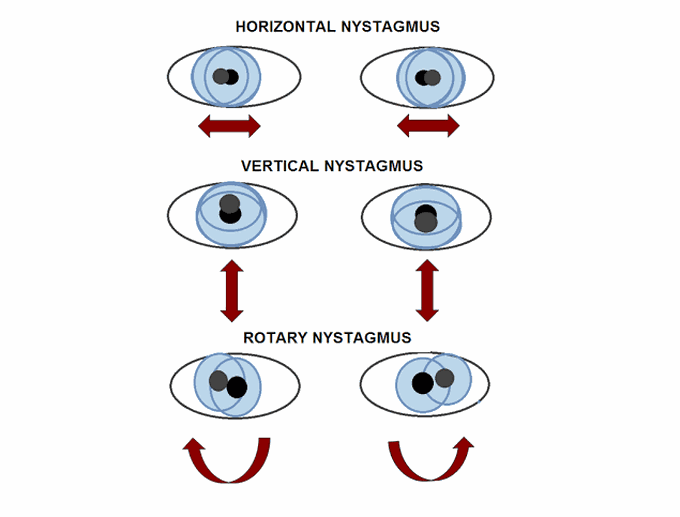


Nystagmus
Nystagmus is continuous, uncontrolled movement of the eyes. Biphasic or jerk nystagmus is the most common type. It is characterised by slow drift in one direction, followed by fast correction/recovery in the opposite direction. The direction of the fast phase designates the direction of the nystagmus. If there are equal oscillations in both directions, it is called pendular nystagmus. Nystagmus is an involuntary rhythmic occilations of the eyes which can be vertical, rotatory or multidirectional. It may be continuous or paroxysmal or evoked by manoeuvres such as gaze or head position. The most common form, 'jerk nystagmus', consists of alternating phases af a slow drift in one direction with corrective saccadic 'jerk' in the opposite direction. The direction of the fast jerk is used to define the direction of nystagmus. Pendular nystagmus, in which there is a sinusoidal oscillation without a fast phase, is less common. Nystagmus may caused by disorders of the vestibular, visual or cerebellar pathway. What are the clinical pathologies in: ▪︎Jerk Nystagmus - Peripheral; Central; Dyconjugate/Ataxic ▪︎Pendular Nystagmus


